Old North Church
Construction of Christ Church began in 1723 and it took nearly 20 years to complete. It was finished with a tall steeple which provided a landmark for ships approaching Boston. In 1804 the steeple was destroyed in a hurricane, so Charles Bullfinch designed a replacement. The Bullfinch steeple succumbed to a hurricane in 1954 and has been replaced with a specially strengthened steeple designed to look like the pre-Bullfinch steeple. In 1775 sexton Robert Newman climbed the steeple and held up two lanterns. This was a signal from Paul Revere that the British were moving towards Lexington and Concord by sea rather than overland. The sexton’s actions were not in tune with the views of the congregation, the majority of whom were loyal to the British King. Although the official name of the church remains Christ Church it is nowadays better known as Old North Church. It is the oldest church still standing in Boston and remains in active use as an Episcopal church. Click Tab 2 to see the interior of the church.
North End
St Stephens Church & Paul Revere statue
In 1714 a Congregationalist Meeting House opened on Hanover Street. Between 1802 and 1804 the building was extensively modified and extended by Charles Bullfinch and the Unitarian New North Church was born. With increasing numbers of Irish settlers arriving in North End, in 1862 it became Roman Catholic and the name was changed to St Stephens Church. Hanover Street was widened in 1870 and the church was moved back 5 metres (16 feet). Shortly after it was raised around 2 metres (more than 6 feet) above its foundations to create a chapel underneath it. The church was restored in 1965 including bringing it back down onto its earlier foundations. John F Kennedy's mother, Rose, was baptised here in 1890 and it was also the site of her funeral in 1995. It is the only church designed by Charles Bullfinch still standing in Boston. This picture shows the church viewed down Paul Revere Mall, a brick paved park with a statue of Paul Revere on horseback. Work started on the statue in 1883 but it was not unveiled to the public until 1940. It is ironic that buildings from Revere’s time made way for the mall.
Clough House
Around 1712 master mason Ebenezer Clough built six identical houses at the back of Christ Church(Old North Church). The house where Clough lived is the only one to the six still standing, the other five that he built built speculatively have long since been demolished. Clough later helped to build Christ Church and took part in the Boston Tea Party. This rare example (for central Boston) of an early 18th century free-standing single-family home was restored in 1971.
Copp's Hill Burying Ground
Copp’s Hill as originally called Mill Hill as it was here in 1634 that the colonists erected their first windmill to grind corn. It was later renamed Copp’s Hill after William Copp who owned a farm on the slopes. In 1661 Old North Burial Ground (as it was initially known) was established as the second cemetery in Boston after King’s Chapel.
DLU170920
Click on Minimap to navigate
Home > US States > New England > Massachusetts > Boston >
The North End of Boston that was settled in the 1630s was on a peninsula separated from central Boston by a narrow neck of land, hence it was then known as the ‘Island of North Boston’. By the 1700s it was the place where prosperous merchants, tradesmen and shipbuilders set up their businesses. After the Revolutionary War the wealthy merchants began to move to the West End and Beacon Hill. North End became a working class neighbourhood, a tough but thriving centre for shipbuilding and seafaring. In the early 1800s North End was integrated with the rest of Boston by filling in the mudflats that separated them but nevertheless it became increasingly lawless. From the mid 1800s North End saw a huge influx of poor Irish immigrants, followed by Jewish immigrants and later Italians. The North End is still home to many people of Italian descent and it is known as Boston’s ‘Little Italy’.
Paul Revere House
Built in around 1680, the Paul Revere House is the oldest building still standing in the North End. If you haven’t heard of Paul Revere, you will come away from Boston with this omission from your education thoroughly corrected. Born in Boston in 1734 he was a silversmith by trade. His great claim to fame was his ‘Midnight Ride’ to Lexington on April 18, 1775 to warn Samuel Adams and John Hancock that British soldiers were coming to arrest them. After the Revolutionary War, Revere widened his business interests including opening the first copper rolling mill in the USA. Revere’s revolutionary role was largely forgotten until in 1860 Longfellow wrote his poem ‘Paul Revere’s Ride’. Click Tab 2 to see the statue of Paul Revere in nearby Paul Revere Mall. Old North Church is visible in the background.
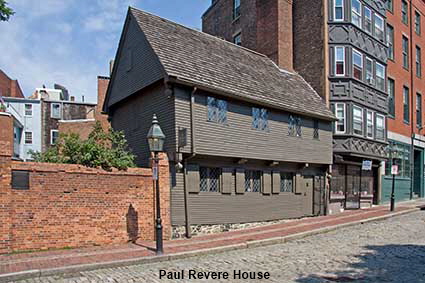
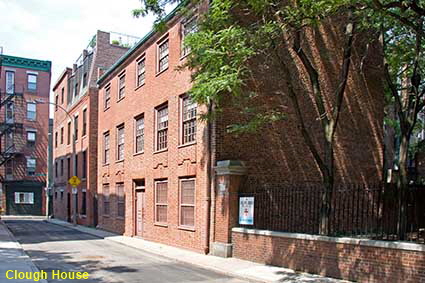
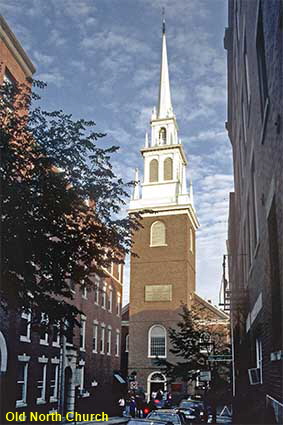
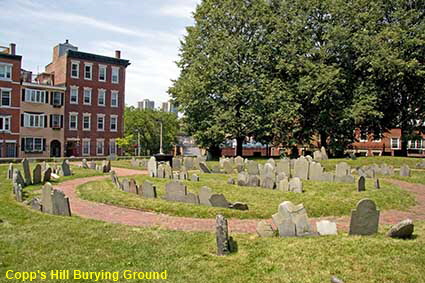
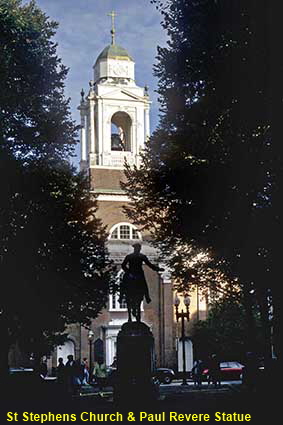


To move forwards or backwards through the Boston trail click the arrows above, or select your next destination on the Minimap.
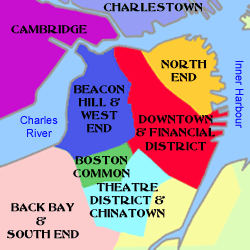

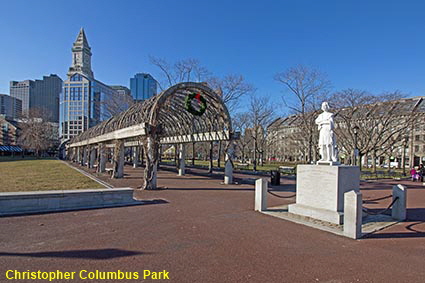
Christopher Columbus Park
Just inside North End on the border with Downtown is a park dedicated to someone who never came anywhere near here. This 1.8 hectare (4.5 acre) park is dedicated to Christopher Columbus, the Italian explorer. Columbus believed that there was a western route to Asia across the Atlantic Ocean. From the 1480s he sought sponsorship from numerous governments without success until in 1492 the Spanish Crown agreed to sponsor an expedition. Columbus duly set off across the Atlantic Ocean but what he found was not Asia, but the Americas. He made four voyages between 1492 and 1503, claiming the territory that he found for the Spanish Crown. Did Columbus discover the Americas? Probably not, it is generally accepted nowadays that the Viking explorer Leif Erikson discovered the Americas back in the 11th century. Columbus certainly did not discover the USA, he spent his time exploring the Carribean and Central America. Hailing from a warm Mediterranean climate he certainly would not have been keen to head as far north as Boston! Despite Columbus having little or no significance for the USA he has long been revered as the discoverer of America, hence this park in Boston and the slightly odd looking statue of him on the right.
© Mike Elsden 1981 - 2025
The contents of this page may not be reproduced in full or in part without permission